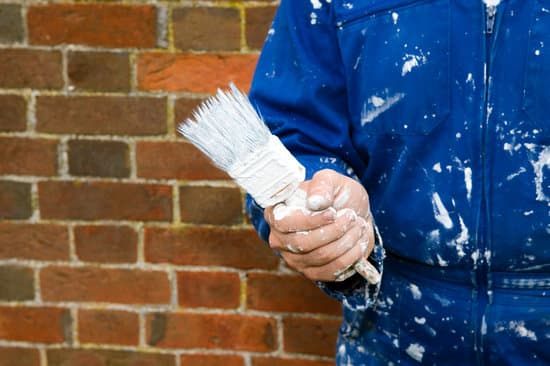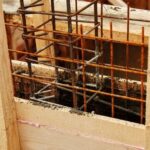Are you wondering, “Can you take money from your 401k for home improvements?” Many homeowners have found themselves in this position, weighing the options of using their retirement savings to fund renovations and upgrades. In this article, we will explore the ins and outs of utilizing your 401K funds for home improvements. Understanding the potential benefits, risks, and alternatives to tapping into your retirement account can help you make an informed decision about your home improvement plans.
When it comes to financing home improvement projects, using funds from your 401K can be an appealing option for many homeowners. However, before making any decisions, it is crucial to understand the implications of taking money from your retirement savings for this purpose. In the following sections, we will delve into the various aspects of using 401K funds for home improvements, including the potential benefits and risks, as well as alternative options that may be available to you.
As you consider whether or not to utilize your 401K funds for home improvements, it’s essential to weigh the pros and cons carefully. While accessing these funds can provide a source of capital for enhancing your living space, there are also potential downsides and considerations that must be taken into account.
By gaining a comprehensive understanding of this topic, you can make an informed decision about whether taking money from your 401K is the right choice for funding your home improvement endeavors.
Benefits of Using 401K Funds for Home Improvements
Low Interest Rates
One of the main benefits of using 401K funds for home improvements is that you can access the money at a relatively low interest rate compared to traditional loans or credit cards. By borrowing from your 401K, you are essentially borrowing from yourself and paying back the principal with interest to your own account.
No Credit Check
Since you are borrowing from your own retirement savings, there is no need for a credit check when taking a 401K loan for home improvements. This can be beneficial for those who have less than perfect credit scores and may not qualify for favorable loan terms from traditional lenders.
Potential Increase in Home Value
Using 401K funds for home improvements has the potential to increase the value of your property. By investing in renovations or upgrades, you could potentially see a higher return on investment when it comes time to sell your home. This increase in value can offset the amount borrowed from your 401K, making it a financially savvy decision in some cases.
Overall, using 401K funds for home improvements can offer low interest rates, no credit checks, and the potential to increase your home’s value, making it an attractive option for those looking to invest in their property. However, it is important to weigh the risks and consider alternatives before making this financial decision.
Risks and Considerations of Using 401K Funds for Home Improvements
Using funds from your 401K for home improvements can provide several benefits, but it also comes with its own set of risks and considerations that you need to be aware of before making this decision. One major risk is the potential impact on your retirement savings.
Withdrawing money from your 401K means reducing the amount of funds that are available for your retirement, which can ultimately affect your financial security in the future. It’s important to carefully weigh the long-term consequences of tapping into your 401K for immediate needs.
Another consideration is the potential tax implications and penalties associated with early withdrawal. If you are under the age of 59 ½, taking money out of your 401K for home improvements may result in a 10% early withdrawal penalty in addition to income taxes. This can significantly reduce the amount you receive from your withdrawal and eat into the funds you were hoping to use for home improvements.
Additionally, using 401K funds for home improvements means missing out on potential investment growth. The money you take out will no longer be invested in the market, potentially missing out on gains over time. You’ll need to consider whether the benefit of using the funds now outweighs the lost opportunity for future growth. It’s essential to consult with a financial advisor or tax professional to fully understand all the risks and considerations before making a decision.
Alternatives to Using 401K Funds for Home Improvements
There are several alternatives to using 401k funds for home improvements that individuals should consider before making a decision. These alternatives can provide the necessary financial resources without jeopardizing retirement savings.
Home Equity Loan or Line of Credit
One alternative to using 401k funds for home improvements is to tap into the equity in your home through a home equity loan or line of credit. This option allows homeowners to borrow against the value of their homes, typically at lower interest rates compared to other forms of borrowing. However, it’s important to note that failure to make payments on a home equity loan or line of credit could result in the loss of your home.
Personal Loan
Another alternative is obtaining a personal loan from a bank, credit union, or online lender. Personal loans can be used for various purposes, including home renovations. Depending on your credit score and financial situation, you may qualify for favorable terms and interest rates. However, it’s crucial to carefully review the terms and conditions before committing to a personal loan.
Refinancing Your Mortgage
Refinancing your mortgage can also provide access to funds for home improvements. By refinancing at a lower interest rate or extending the term of your mortgage, you can free up cash for renovation projects while potentially saving money on monthly mortgage payments. Keep in mind that refinancing comes with closing costs and other fees, so it’s essential to weigh the pros and cons before deciding if this is the right option for you.
How to Determine if Taking Money From Your 401K Is the Right Choice
When considering whether to use funds from your 401K for home improvements, it’s important to carefully evaluate your financial situation and long-term goals. One of the first steps is to assess the urgency and necessity of the home improvements. If the upgrades are essential for health and safety reasons or for increasing the value of your property, tapping into your 401K may be a viable option.
Additionally, it’s crucial to review your overall financial picture and retirement plans. Consider factors such as your age, projected retirement date, existing savings, and potential future expenses. If withdrawing money from your 401K will significantly impact your retirement nest egg or result in hefty penalties and taxes, you may want to explore alternative financing options for your home improvements.
Furthermore, seeking guidance from a financial advisor can provide valuable insight into the potential implications of using 401K funds for home renovations. An expert can help you weigh the pros and cons based on your individual circumstances and offer alternatives that align with your financial goals.
| Financial Factors | Considerations |
|---|---|
| Age | Evaluating how close you are to retirement can impact whether using 401K funds is a suitable choice. |
| Risk Tolerance | Assessing how comfortable you are with potentially reducing your retirement savings by using these funds for home improvements. |
Remember that while accessing funds from your 401K for home improvements might seem like an appealing option, it’s important to make an informed decision that aligns with both your short-term needs and long-term financial security.
The Process of Withdrawing Money From Your 401K for Home Improvements
401K funds can be a tempting source of money for home improvements, but it’s important to understand the process of withdrawing these funds before making any decisions. Here are the steps you need to take when considering using your 401K for home improvements:
- Evaluate your eligibility: Check with your 401K plan administrator to understand the rules and requirements for making a withdrawal for home improvements. Some plans may have specific criteria or restrictions that you need to meet in order to access the funds.
- Determine the amount needed: Calculate how much money you will need for your home improvements and consider whether you are able to withdraw that amount from your 401K without facing financial difficulties later on.
- Submit a withdrawal request: If you meet the eligibility criteria and have determined the necessary amount, you will need to submit a withdrawal request to your 401K plan administrator. Be prepared to provide documentation of the planned home improvements and any other required paperwork.
- Understand the processing time: It’s important to be aware of the processing time for 401K withdrawals. In some cases, it may take several weeks for the funds to be disbursed, so make sure to factor this timeline into your home improvement plans.
By understanding and following these steps, you can ensure that the process of withdrawing money from your 401K for home improvements is as smooth and efficient as possible. Always consult with a financial advisor before making any decisions regarding your retirement savings, as there may be alternative options or implications that you haven’t considered.
Tax Implications and Penalties of Withdrawing 401K Funds for Home Improvements
When considering taking money from your 401K for home improvements, it is important to understand the tax implications and potential penalties. Here are some key factors to consider:
- Early Withdrawal Penalties: Withdrawing funds from your 401K before the age of 59 ½ may result in early withdrawal penalties of 10% on top of regular income taxes. This can significantly reduce the amount you receive for your home improvements.
- Income Tax Considerations: Any funds withdrawn from your 401K are considered income and will be subject to income tax. This means that a portion of the money you withdraw will go towards paying taxes, reducing the amount available for your home improvements.
It is essential to carefully consider these tax implications and penalties before deciding to use your 401K funds for home improvements. Consulting with a financial advisor or tax professional can provide valuable insight into how withdrawing from your 401K could impact your overall financial situation.
Ultimately, understanding the tax implications and penalties of using 401K funds for home improvements is crucial in making an informed decision. While there are benefits to using these funds, it is important to weigh them against the potential drawbacks to determine if this is the right choice for your financial goals.
Tips for Maximizing the Benefits of Using 401K Funds for Home Improvements
In conclusion, while using funds from your 401K for home improvements can be a viable option, it is important to carefully weigh the benefits and risks before making a decision. The potential benefits of using 401K funds include the ability to invest in your home and potentially increase its value, as well as the convenience of accessing the funds. However, there are significant risks to consider, such as depleting your retirement savings and incurring taxes and penalties.
It is essential to explore alternative options before tapping into your 401K, such as taking out a home equity loan or line of credit. These alternatives may provide access to funds for home improvements without jeopardizing your retirement savings. Additionally, it is crucial to consult with a financial advisor to determine if using 401K funds is the right choice for you based on your individual financial situation and long-term goals.
If you do decide to move forward with using 401K funds for home improvements, there are tips for maximizing the benefits and minimizing the drawbacks. These include considering smaller-scale projects that require less funding, maximizing tax deductions for home renovations, and creating a plan to replenish your retirement savings after withdrawing from your 401K. Ultimately, careful consideration and strategic planning are key when utilizing 401K funds for home improvements.
Frequently Asked Questions
Can You Withdraw Money From 401k for Home Repairs?
Withdrawing money from a 401k for home repairs is possible, but it’s important to consider the potential consequences. While some 401k plans may allow for hardship withdrawals or loans for home repairs, these actions can have significant implications on your retirement savings. It’s advisable to explore alternative financing options for home repairs before tapping into your 401k.
Can I Withdraw From My 401k for a Home Purchase Without Penalty?
Under certain circumstances, you may be able to withdraw funds from your 401k for a first-time home purchase without incurring a penalty. The IRS allows for penalty-free withdrawals up to a certain limit for qualifying home purchases.
However, it’s crucial to fully understand the eligibility requirements and potential tax implications before making any decisions about withdrawing funds from your 401k.
Is It a Good Idea to Pull Money From 401k for House?
Pulling money from a 401k for a house should be carefully considered due to its long-term impact on your retirement savings. While it may seem like a convenient option for funding a house purchase, doing so can jeopardize your financial security in retirement.
It’s generally recommended to explore other sources of financing such as mortgage loans or down payment assistance programs before resorting to using your 401k funds for purchasing a house.

I’m thrilled to have you here as a part of the Remodeling Top community. This is where my journey as an architect and remodeling enthusiast intersects with your passion for transforming houses into dream homes.





